>
Fence Posts Buying Guide
This fence posts buying guide discusses all these subjects. Click on any of the topics below to learn about what to look for when buying fencing posts:
Step 2: Types of garden fence posts
Step 3: Fence post installation
Step 6: Decorative fence posts
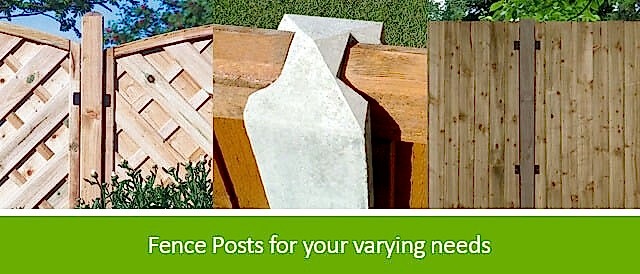

When installing or upgrading a fence, choosing the right post is as important as the fence panels. The posts provide the structure to make your fence strong, secure and weatherproof. With so many sizes and styles to choose from, you need to know which post will fit your fencing needs.
Whether you need timber posts for a traditional garden, concrete posts for extra stability or modern posts for a contemporary design, this guide will help you decide. From installation tips to maintenance advice, we will cover everything you need to buy the best fence post for your project.
This fence posts buying guide discusses all these subjects. Click on any of the topics below to learn about what to look for when buying fencing posts:
Step 2: Types of garden fence posts
Step 3: Fence post installation
Step 6: Decorative fence posts
Step 1: Fence post sizes
Fence posts are the backbone of your perimeter fence, the stabilising source that keeps your boundary secure. In our buying guide, we will explore all the options to ensure you have the information needed to install your surrounding fence panels quickly and safely. We will cover how to choose the correct size fence and gate posts, select materials that suit your property's fence line, and make the most of fencing accessories to enhance durability and aesthetics.
3ft fence posts
3ft fence posts are designed to support small fences or post and rail fencing. The best fence posts are typically 2 feet longer than the fence panels they support. 3ft fence posts are not often used with fence panels, but you never know when you might need a shorter barrier to protect areas in your garden or outside space that require definition.
4ft fence posts
4ft fence posts support 2ft fence panels. Picket fences in front gardens, which add charm while defining your perimeter, often require 4ft posts for installation. Another use for 4ft posts and 2ft fencing is decorative pathway edging. If you need fence post extensions for a larger-than-standard size, 4ft posts often fit the bill.
5ft fence posts
In the fence post world, 5ft fence posts are the first size considered standard. You can expect to buy cheap fence posts in standard sizes; anything over standard is usually more expensive. 6ft to 8ft posts are also standard sizes and provide extra height for privacy or security. The cost tends to increase when you go beyond these standard sizes due to the additional materials and manufacturing requirements.
6ft fence posts
6ft fence posts support 4ft fence panels, which are perfect for front garden boundaries, decorative pathway edges, pet enclosures, garden sectioning and low-level privacy. They are a standard size and can be easily bought in various materials and designs. If you wish to raise your fence post, you can always add fence post caps. These not only look great but also protect wooden fence posts from water damage as they are the ultimate fence post protection.
7ft fence posts
5ft fences use 7ft fence posts, and this size of fencing is more than just a perimeter fence. Use 7ft fence posts to support garden borders, pool enclosures and windbreaks, add a decorative feature, create garden rooms and, most importantly, protect your privacy and seclusion by acting as a noise reduction agent.
8ft fence posts
8ft fence posts support 6ft fence panels and tall garden gates. 6ft fences provide the perfect height and stability to ensure your structures are secure and durable. 8ft fence posts support almost the tallest privacy screens that can block out unwanted views and noise. This makes them perfect for back gardens, pool areas and other spaces where privacy is a priority.
9ft fence posts
9ft fence posts are used for the tallest fences that you can install without planning permission. 6ft high fences will often be installed using 9ft fence posts. These posts are not standard and are frequently used in metal fencing. Chain link fence posts are made of metal and are available in many different sizes, including 9ft and 10ft metal fence posts. Together, the post and the chain link panels make excellent industrial fencing.
10ft fence posts
Fences using 10ft fence posts will almost certainly be specialist enclosures that require planning permission. These 12ft barriers are not generally for domestic use but are available for noise or windbreaks, animal enclosures or sports facilities. Steel gate posts are often this height, along with matching fence post supports or metal fence posts used in chain link fences.
Height rule for fence posts
Proper fence post installation relies on tried and tested fence post installation rules. The two-thirds rule for stability and fence installation durability is the main rule to follow. Breaking down the two-third rule for quick and easy installation is as follows:
- One-third of the post must be underground
- Two-thirds of the fence post stays above ground
For example, if you are installing a 6ft fence panel, then you will need an 8ft fence post, and 2ft of that fence post will be buried underground. Proper fence post installation ensures your fence posts are stable and durable and add to the overall look of your fence.
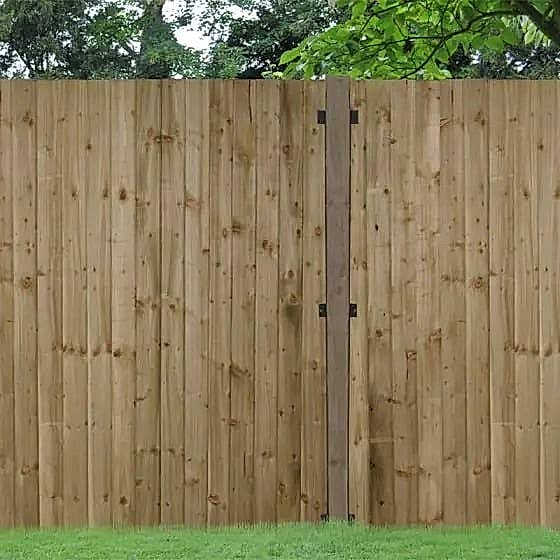

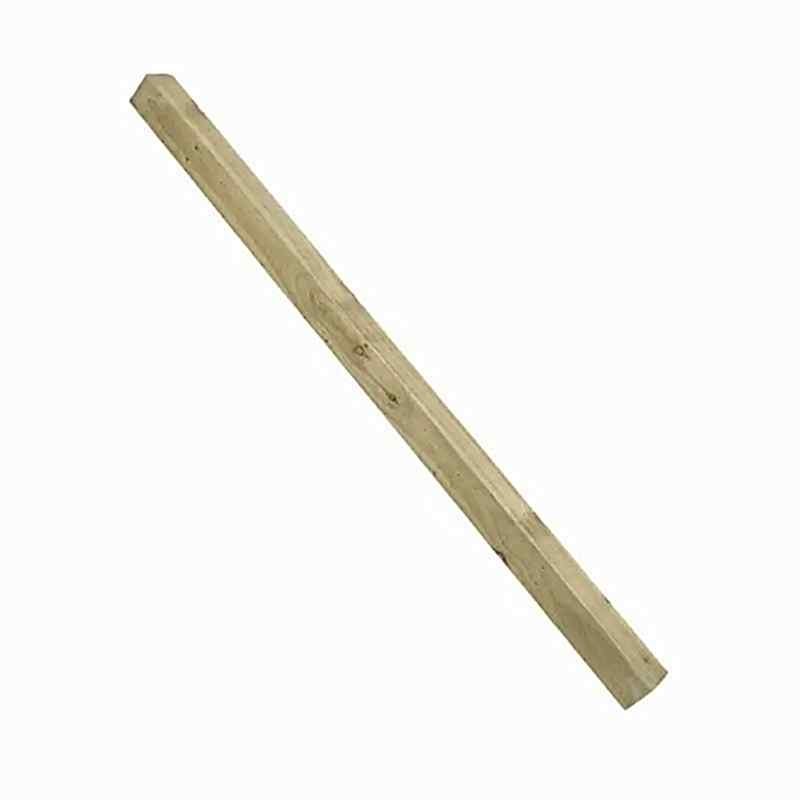

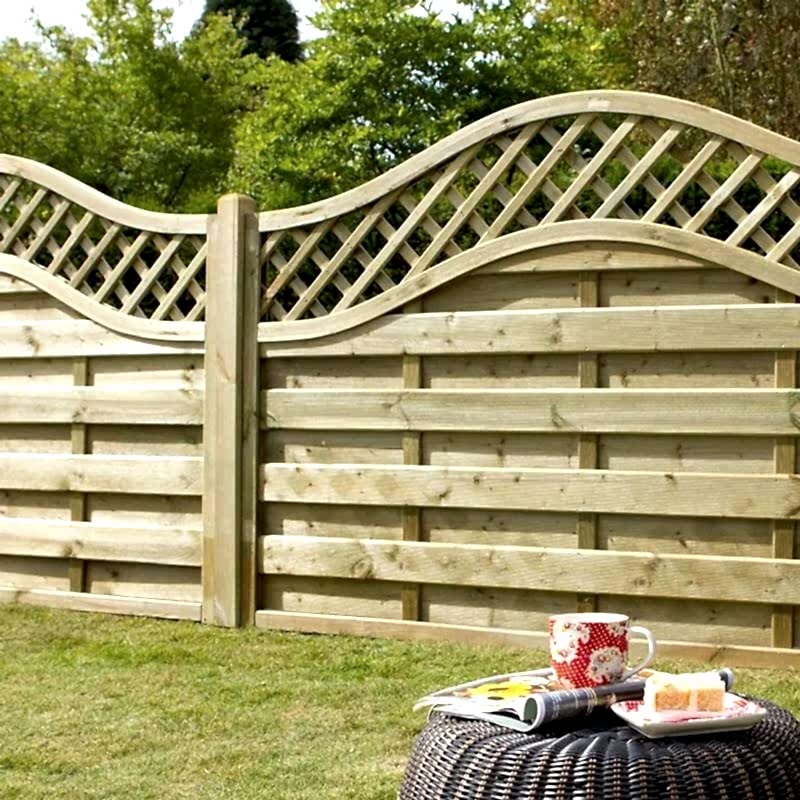

Step 2: Types of garden fence posts
Wooden fence posts are the most common or well-known in the UK and work well with decorative or classic wooden fences. However, you can buy concrete fence posts, metal fence posts, composite fence posts, and plastic fence posts. The range of materials complements your fence panels and garden gates and allows your boundary fence to live up to your needs and expectations. If you are not sure what you need, do not worry because we will cover all types of fence posts in this fence posts buying guide.
By material
Ideally, your fence post material should complement your perimeter fence panels and back or side gate, ensuring your fencing materials match and promote continuity and installation and are reflected in the fence post cost.
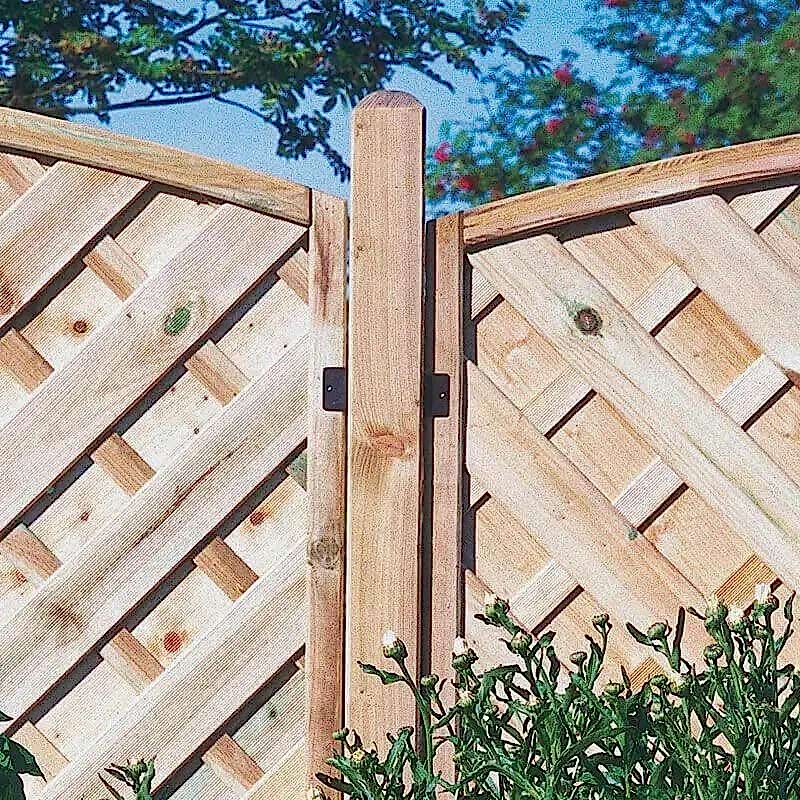

Wooden fence posts
Wooden fence posts are a best seller and among today's most searched-for fence posts. If you are looking for picket fence posts, they will likely be wooden. Most round fence posts, fence post caps and decorative fence posts are made of wood. Wooden fence posts are popular because they offer a classic look that complements any property. Timber or wooden fence posts are versatile and can be personalised with paint or stain to meet your desired look. If you are looking to buy fence posts, you will notice that wooden fence posts offer the widest selection at the most affordable price range. These factors make them a practical and attractive choice for many homeowners.
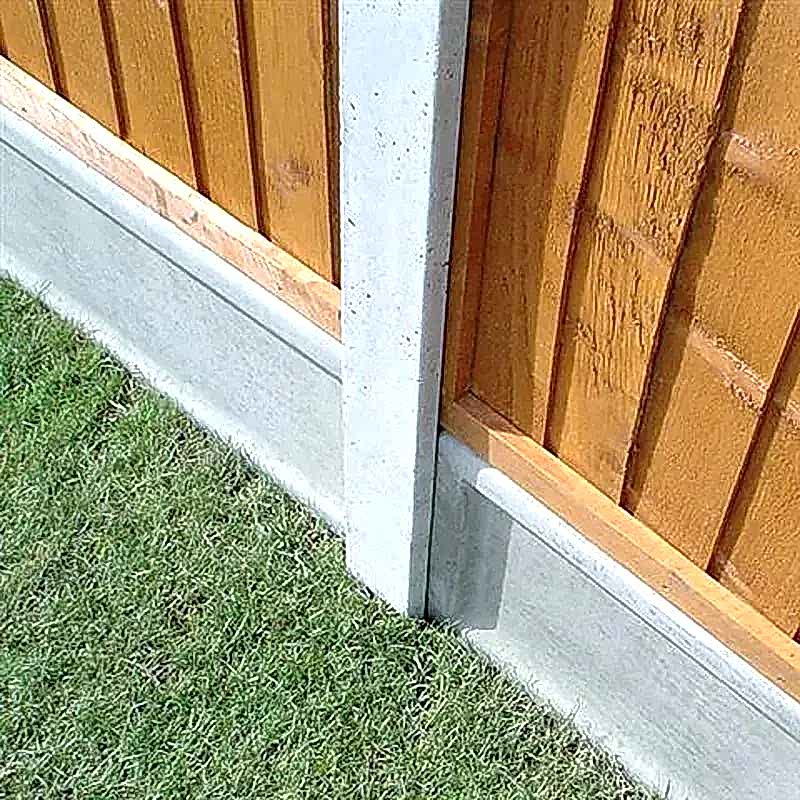

Concrete fence posts
Concrete fence posts are a firm favourite and the most searched-for for sale with our customers because they are reliable, durable and offer maximum stability, especially in wet or unstable conditions. While concrete is not eco-friendly or especially attractive, it is so durable that you should not need to replace the posts during the lifespan of the fence, which in some cases could be as much as 30 years. This long-lasting reliability makes concrete fence posts and cementing fence posts cost-effective for any fencing project.
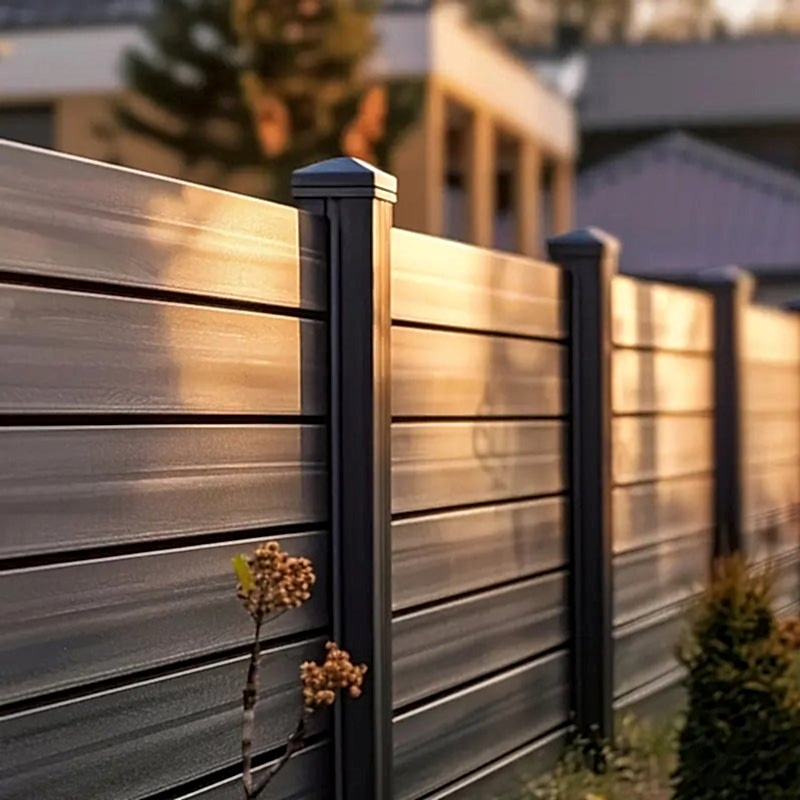

Composite fence posts
Composite fence posts are made of a mixture of recycled wood and plastic bound together with an adhesive and preservative agent to ensure longevity. They are popular with people who like the aesthetics of wood but prefer the durability of plastic with an eco-stamp. Composite fence posts are suitable for wet soil conditions and anywhere where the ground is made up of heavy clay. Additionally, they offer a sustainable and low-maintenance fencing solution that can withstand various environmental conditions.
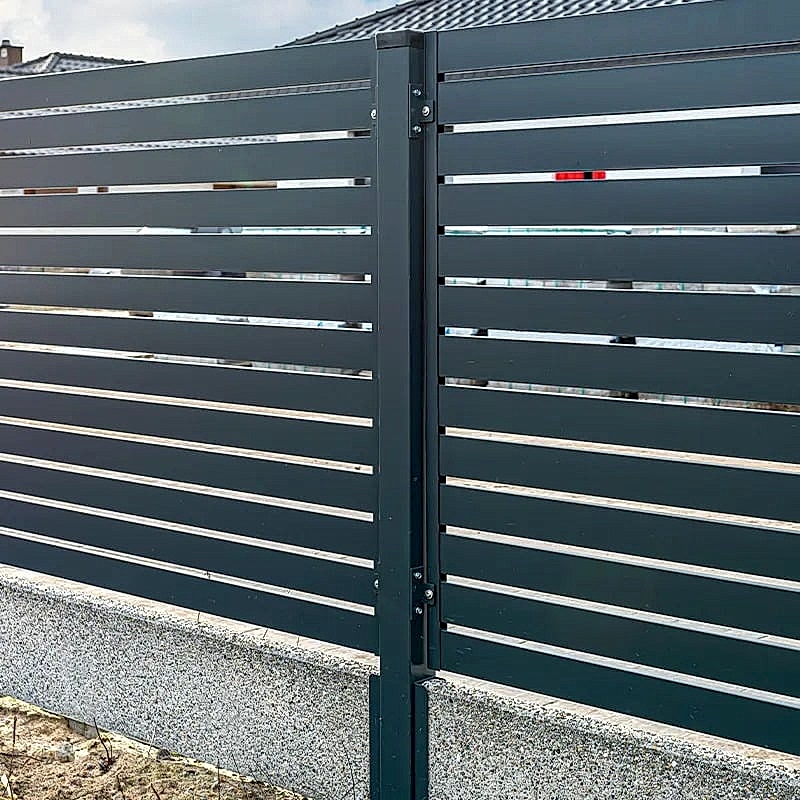

Metal fence posts
If you are looking for longevity, look no further than metal fence posts or metal railing posts. We highly recommend metal fence posts for light industrial and high-activity areas that need a secure boundary. Metal fence posts combined with metal fence panels are a great deterrent and work well with brickwork or concrete rendering for a contemporary look. This proves that metal fence posts need not be ugly just because they are strong and resilient. Metal fence posts offer an upgraded, contemporary aesthetic that enhances any space.
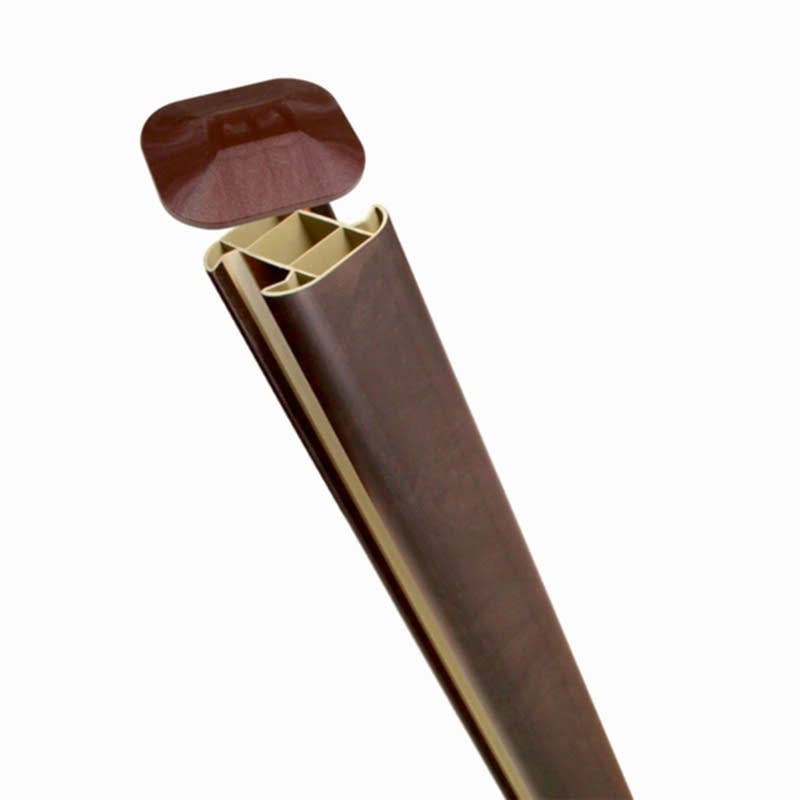

Plastic fence posts
Plastic fence posts are used with plastic fence panels, and plastic is especially useful in wet locations. Installation is relatively simple, as the posts are lightweight and easy to handle. Plastic fence posts are a popular option because they are rot-resistant, anti-rust, and do not suffer from insect damage, making them a low-maintenance option. Additionally, plastic fence posts come in various colours and styles, allowing aesthetic customisation. This versatility makes them a popular choice for both residential and commercial properties.
By usage
Knowing which fence posts are most suitable for your project is always helpful. In this guide, we will explain the definition of each type of fence post and what job they are best designed for.
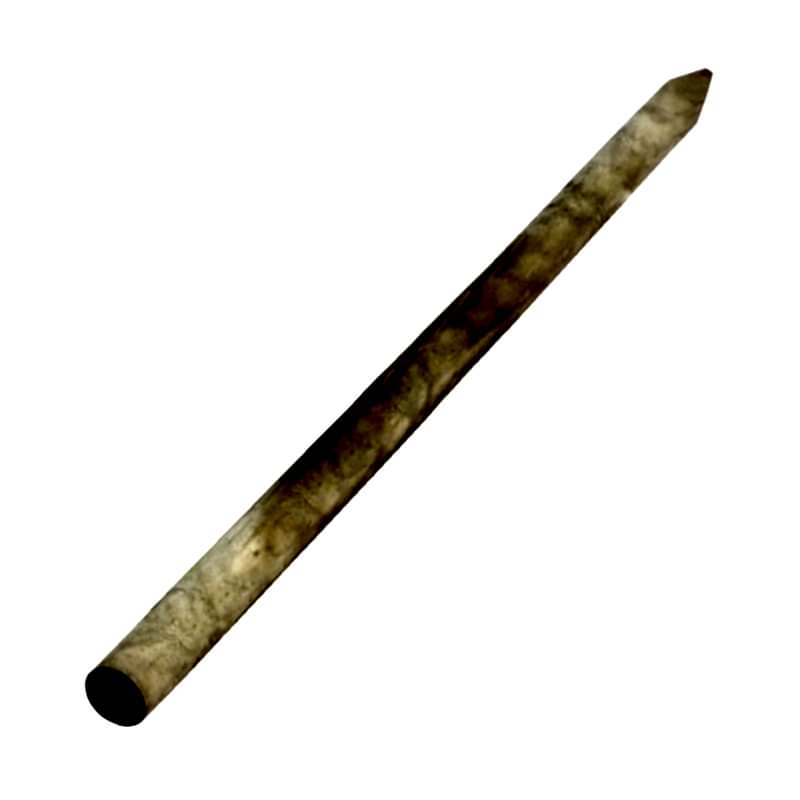

Spiked fence posts
Spiked fence posts are used in areas with soft ground. The spikes provide extra stability to ensure your fence remains secure. In most cases, spiked fence posts are made of powder-coated or galvanised steel. The main reason for using a spiked fence post is the ease of installation. Using a spiked fence post means you do not need to dig holes or use concrete to install these durable fence posts. People who use spiked fence posts often combine them with contemporary wooden fence panels or chain link fences for an industrial or modern look.
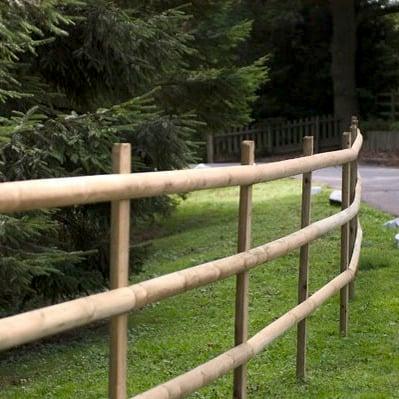

Post and rail fencing
Post and rail fencing is traditional and versatile, often used in parks, public sports grounds, agricultural settings, and to section off bigger gardens. Post and rail fencing consists of vertical fence posts and horizontal rails, usually made from wood. Post and rail fencing is known in the UK for its durability and natural appearance; it is popular for defining boundaries without blocking views. Post and rail fencing provides secure and aesthetically pleasing finishes with broad appeal but is not generally used in a typical urban domestic setting.
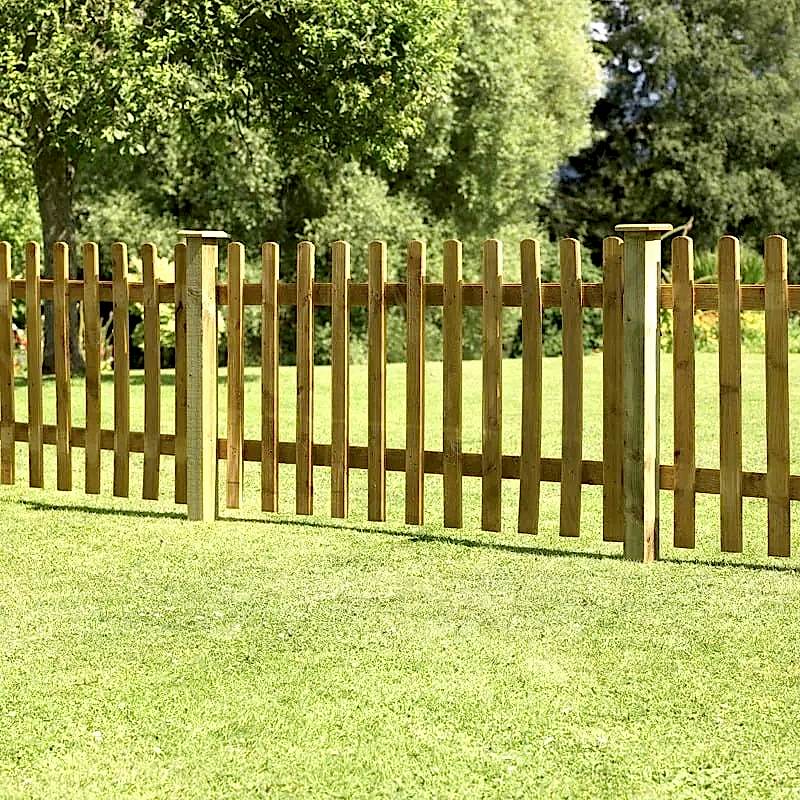

Picket fence posts
Picket fence posts are available in various sizes, from 3ft to 8ft. Picket fence posts and panels are generally used in smaller settings, such as front gardens or to section off areas in residential rear gardens. Although, no hard and fast rules exist, so you can use picket fencing wherever it suits your garden design. Picket fence posts are often made of wood; customers can paint or stain picket fence posts to match the aesthetics of their gardens. Suitable wooden fence posts to use with trellis range from 3’ to 10’, our list includes tall fence posts.
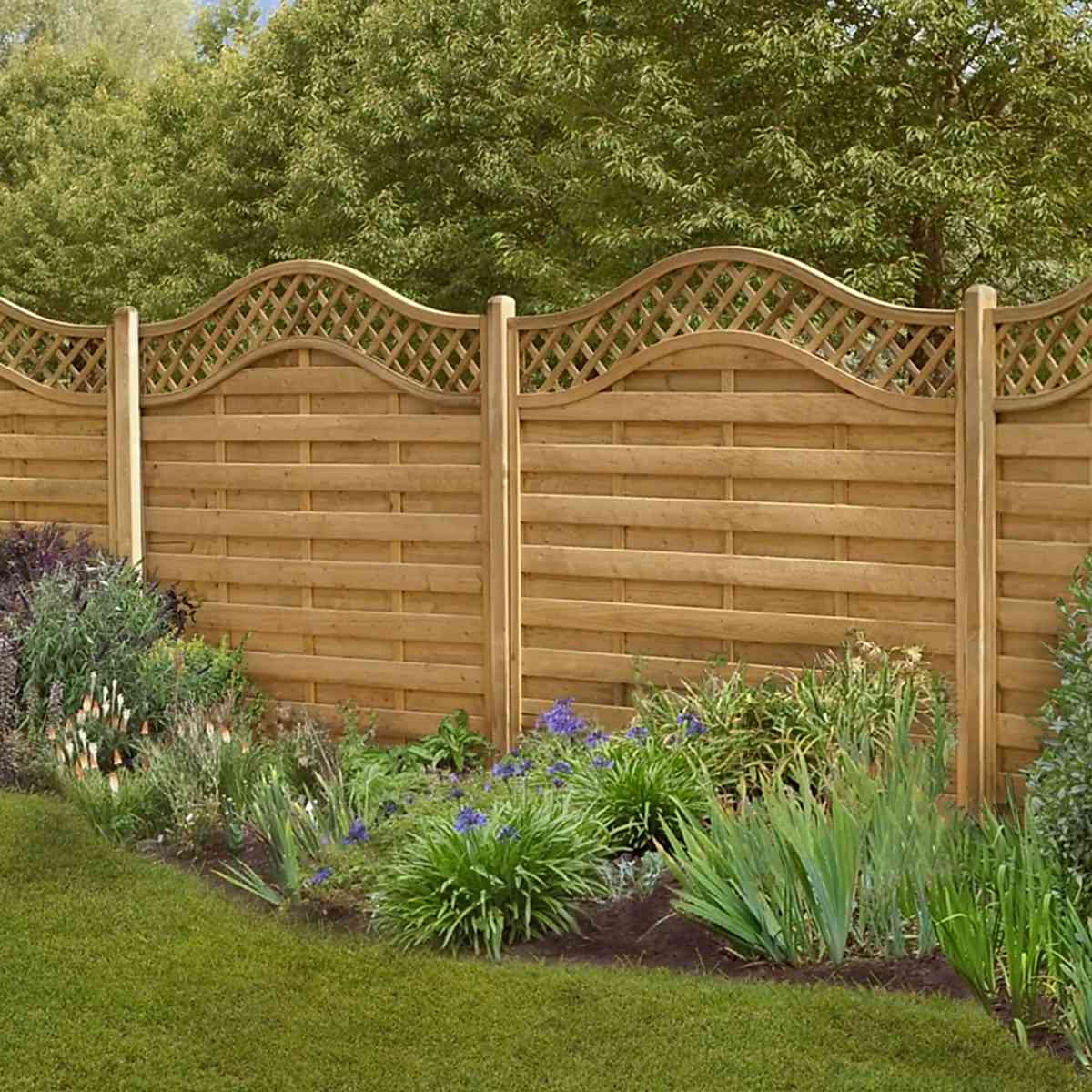

Decorative fence posts
Decorative fence posts are not decorative per se; they are regular fence posts used with decorative fence panels. Just like trellis fencing, you can use regular fence posts to match the aesthetic of your decorative fence panel choice. Here is a list of fence posts you can use with decorative fence panels:
- Wooden fence posts
- Concrete fence posts
- Composite fence posts
- Metal fence posts
Mix and match your decorative fencing with any above for a timeless look and effortless security.
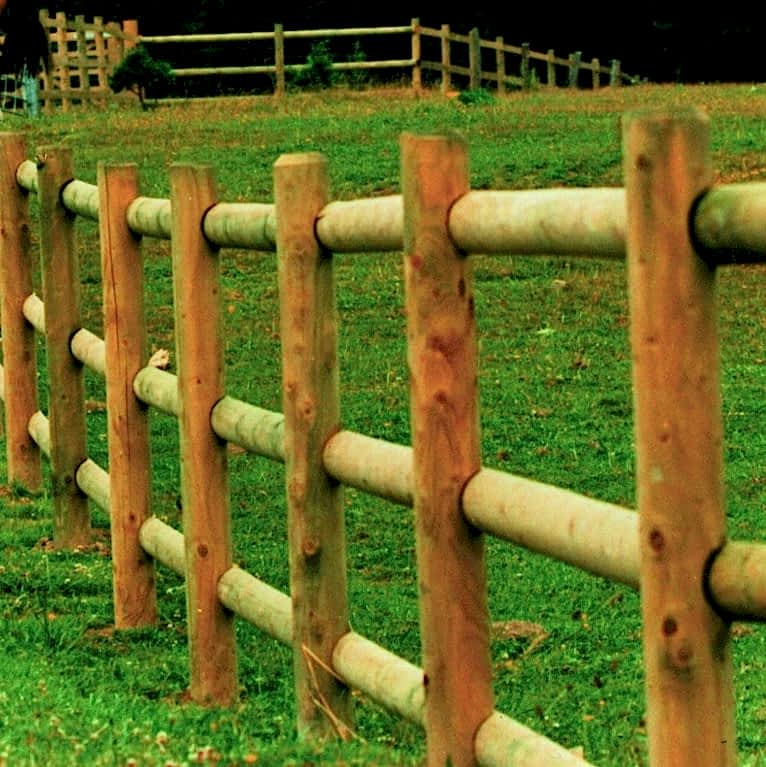

Round fence posts
Round fence posts look as they sound, ‘round or cylindrical’. Round fence posts are used in agricultural settings requiring a stable open fence line. Round fence posts are often used in post and rail fencing for temporary or long-term installation and are sometimes used in decorative fencing situations. We are transparent about when we can use round fence posts, but here are the situations when they are not suitable:
- Round fence posts are not suitable for use with flat surface fences
- Round fence posts are not best used in loose soil as flat surfaces provide more stability
- If you require a more formal look, then round fence posts are probably not for you
The best fence posts are the ones that blend in with the rest of your fence.
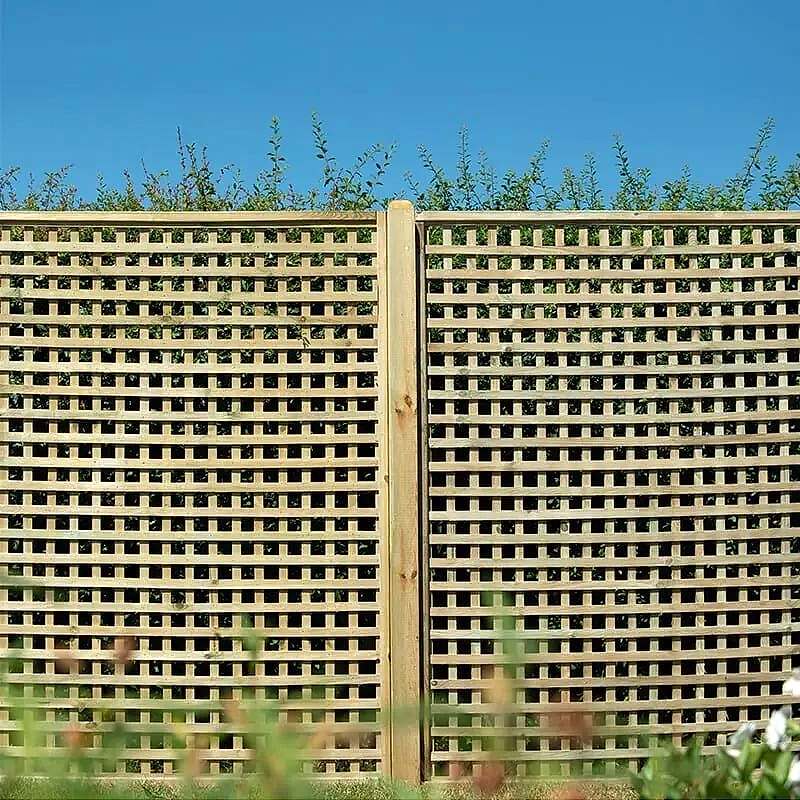

Trellis posts
Trellis fence posts do not exist; the fence posts to use with trellis fence panels are just regular fence posts made of wood, metal, concrete, or composite. As a rule, the fence posts that work well with garden trellis fencing are wooden ones to which you can apply stain or paint to match the remainder of your garden boundary fencing or garden design. Trellis fence panels are often used in rear gardens to create garden rooms or section parts of the garden for outdoor living.
Fence post extensions
Fence post extensions are used to increase the height of your fence without replacing the existing posts. If you have a small boundary fence with 4ft posts and want to maximise the height, consider adding 6ft extensions. This way, you achieve an overall height equivalent to a 10ft post.
Fence post extensions are:
- A practical solution to enhanced privacy and security
- Allowing you to adapt your fence without the hassle of starting from scratch
- Making them an easy-to-install and cost-effective fencing solution
If you invest in fence post extensions, you will save on fence post replacement costs.
Chain link fence posts
Chain link fence posts are made from galvanised metal and are usually, but not always, used with the installation of the chain link or metal fence panels. Chain link fence posts are simple to install and work well with chain link fence panels when quick installation is required. Chain link fence supports or steel gate posts act as a durable solution for people who need enhanced security in their residential back garden right through to light industrial or commercial properties.
Corner posts
Corner fence posts are essential for fencing systems and fence installation. As the name suggests, corner fence posts are placed at corners of your fencing where the fence changes direction, typically at 90-degree angles. They provide critical support and stability, serve as secure attachment points for panels or rails, and are often braced to handle increased tension. However, corner fence posts do every fencing type. For instance, they are not ideal for long, straight fencing sections or in decorative applications where a bulkier appearance is undesirable. Corner posts are crucial for maintaining the integrity and durability of fences in high-tension areas.
Temporary fence posts
Temporary fence posts are a practical solution for quick and easy installation when you do not need to keep the fence for extended periods. They are ideal for repairing a fence post without needing permanent fixtures. These posts provide fence post protection by offering stability and support in various conditions. Temporary fence posts are often advertised as ‘cheap fence posts’, making them a cost-effective option for temporary fencing on construction sites, temporary events or moveable garden projects. They offer flexibility and convenience in most flexible circumstances.
Step 3: Fence post installation
Over the years, we have written a large range of fence post-installation articles. Rather than write overviews of how to install fencing, we advise you to read any of these guides for comprehensive information.
Fencing posts specific content
The following articles have a specific fencing posts focus
1) How to Fix a Fence Post in Concrete: Tips for Concreting in Fence Posts
2) How to Install a Fence Post into Soil
General fencing installation, including fence posts
The following articles are about general fencing installation, but all include sections about fence post installation:
1) Building Picket Fences: A Step-By-Step DIY Picket Fence Installation Guide
2) Can I install a Fence on My Driveway?
3) Learn How to Erect a Perfect Garden Fence
4) Fence Installation Guide: How to Install a Fence Post and Put Up Your Garden Fencing Panels
5) How to Install a Fence on Sloped or Uneven Ground
Repairing a fence post
This post explores various aspects of repairing a fence post:
1) Guide to Fence Post Repair: Replacing or Fixing a Rotten Fence Post
Step 4: Fence post protection
Fence post protection is an essential step in the lifespan of your perimeter fence. In our fence posts buying guide, we will provide advice on avoiding the perils of untreated fence posts and discuss the differences between dip treated fence posts and pressure treated fence posts. We elaborate on the practical use of gravel boards and cover all the fence post and panel treatments you will need to keep your fence installation stable and secure for as long as possible.
The perils of untreated fence posts
Untreated fence posts have not been subject to any form of treatment. They are raw fence posts that have not been dip treated or pressure treated with preservative chemicals to maintain their lifespan. Untreated fence posts are susceptible to the following:
- Rot and fungal decay
- Insect infestation
- Mould and mildew
We do not sell untreated timber fence posts because they are not a product we recommend to our clients as they will, left untreated, deteriorate much faster than treated wooden fence posts. We recommend you buy only pressure treated fence posts or dip treated fence posts for your garden projects.
Dip treated fence posts
Dip treated fence posts are a great option if you want to buy cheap wooden fence posts. The manufacturers dip the fence posts into vats of chemical stabilisers and preservatives and allow the processed chemicals to absorb into the posts to enhance their durability and usability. Dip treated wooden fence posts easily resist moisture-led decay or pest infestation for up to 5 years or more.


Pressure treated fence posts
If you want to enjoy a longer-lasting fence post guarantee, pressure treated fence posts are the way to go. The manufacturer treats these wooden posts by infusing them with chemical preservatives under high pressure. The pressurised process ensures the preservatives penetrate deeply into all the wood fibres, thoroughly coating them to protect the timber. As a result, pressure-treated fence posts offer enhanced durability and longevity, making them the top choice for your fencing project.
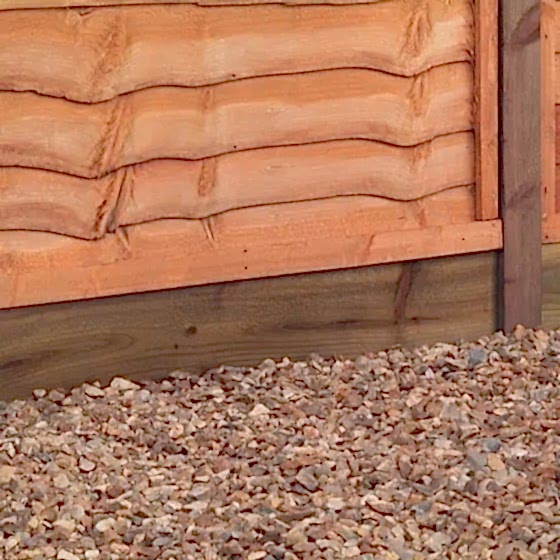

Use of gravel boards
Gravel boards and fence posts are the first line of defence to your fence panels. Gravel boards lift the fence panels off the ground, keeping them away from soil moisture and the chance of decay. You can choose wooden gravel boards or concrete gravel boards; both styles can protect your fence panels; it’s just a matter of preference. If you are working with wooden fence panels, you may choose wooden fence posts and wooden gravel boards or concrete fence posts and matching gravel boards. The choice is yours.
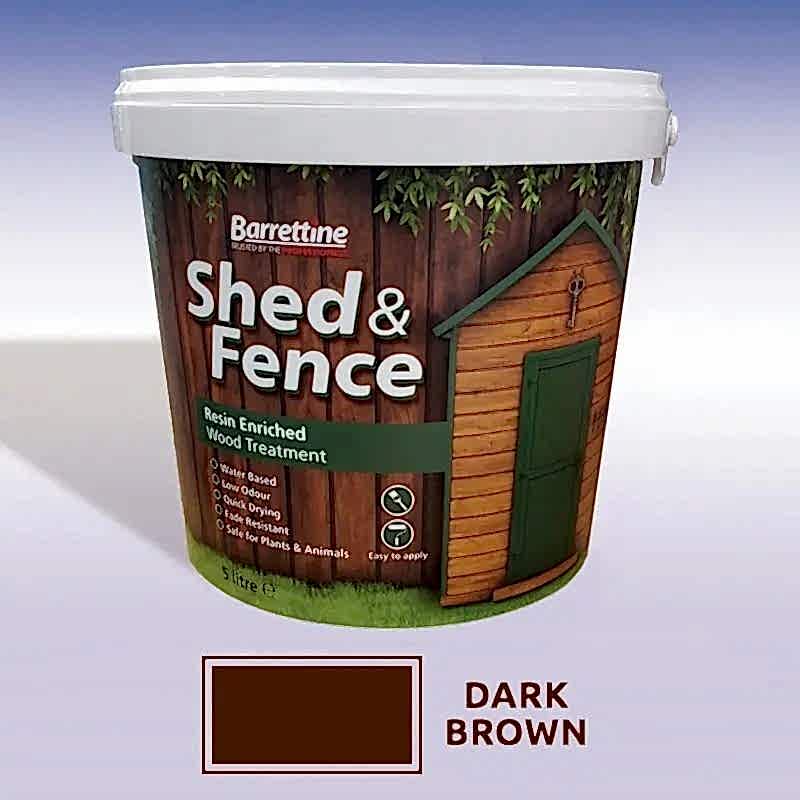

Which treatment should I use?
When choosing fencing materials, buying the most expensive components you can afford is always a good idea. Dip treated fence posts are often referred to as cheap fence posts because they are less costly than pressure treated fence posts and fence panels. They are called cheap fence posts because they have undergone a less time-consuming and expensive preservation treatment than those that are pressure treated. However, you can and should top up your wooden fencing treatments with stabilisers and preservatives we sell under fencing accessories. Click the link here to see all the fence preservation choices.
Step 5: Gate post options
Gate post options are another area that we cover to ensure you have the correct fence posts for all situations.
Integrating a gate post into a fencing run
Integrating a gate with gate posts into your fence line takes several key steps to ensure functionality. Here is a quick rundown on how to install a gate and gate posts into your fence run:
- Choose your location; choose a practical location which aligns with access and the overall fence design
- Remove the fence panel or place the gate posts in the location you have selected. Add the gate posts and gate, and secure with hinges. Double-check that your gate swings freely
- Secure your gate with a latch and locks
For more in-depth information on this topic, along with bracing fence posts, read our blog called Gate Types: Finding the Right Fit for Your Garden – Gate Design Ideas & Styles.
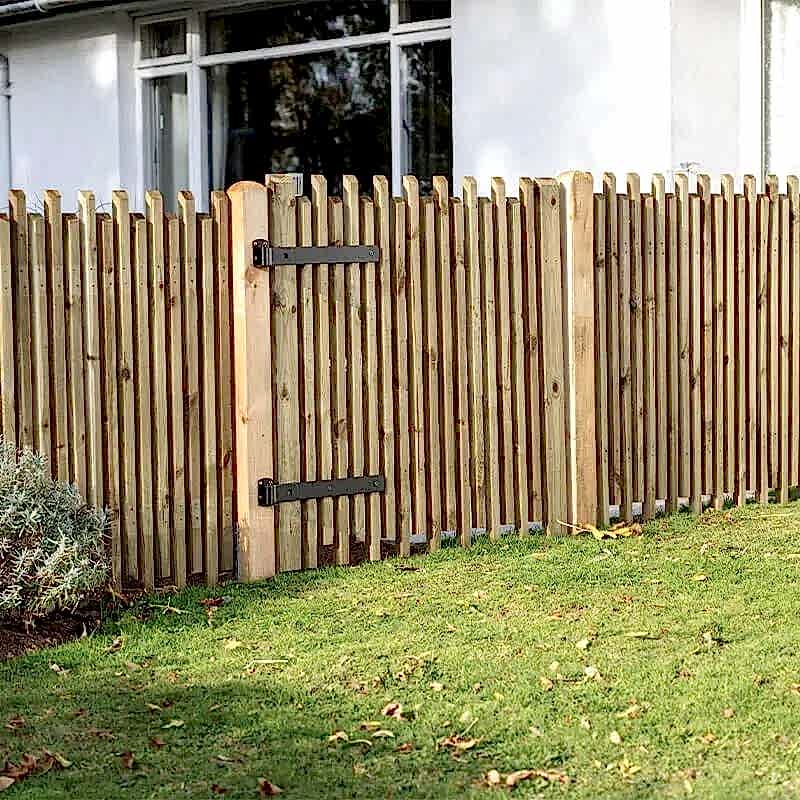

Wooden gate posts
Wooden gate posts and gates are our best sellers, and for good reason. Wooden gates are aesthetically pleasing and offer a wide variety of styles to match all tastes and garden designs. You do not have to match your wooden gate posts with your gate, but you may find it is a practical way to install an entry point into your fence line. Additionally, wooden gates provide a natural, timeless look, elevating the aesthetic appeal of your property, making them a popular choice for many house proud people.
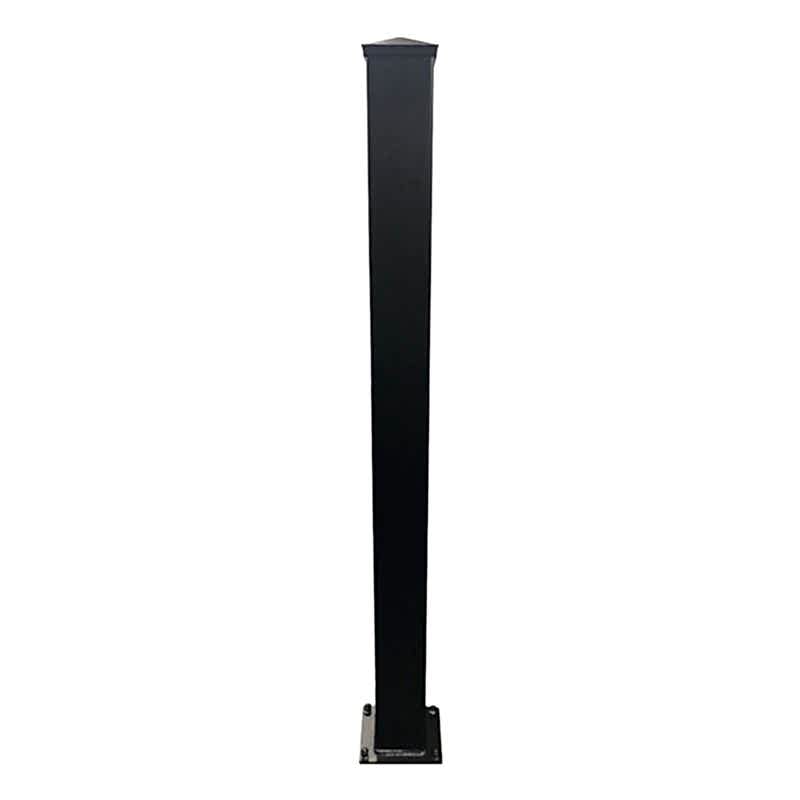

Steel gate posts
Steel gate posts and gates are popular with metal fence and gate owners. It is easy to see why. Steel gates and gate posts offer a sleek, modern look and come in various styles to suit different tastes and garden designs. You do not have to match your steel gate posts with your gate, but doing so can provide a cohesive and practical entry point into your fence line. Additionally, our steel posts are galvanised to resist rust, ensuring they remain durable and low maintenance, making them a reliable choice for any property.
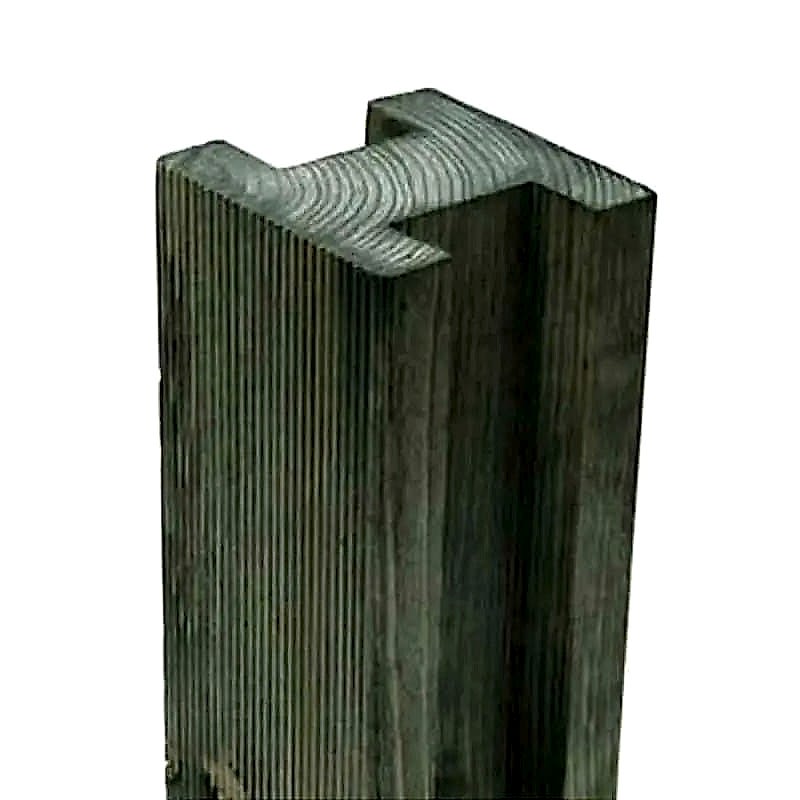

Decorative fence post styles
Fence posts are only decorative when you add interest, such as fence post caps or finials. The most decorative aspect about decorative fence posts is the decorative fence panels they are attached to. You can spruce up your wooden fence posts by painting or staining them or use a metal fence post with wooden fence panels to add an interesting aesthetic. We sell the following fence posts in various sizes to match any decorative fence panel you choose:
Click the links to access all the decorative wooden fence posts for sale and this link to access the decorative wooden fence panels.
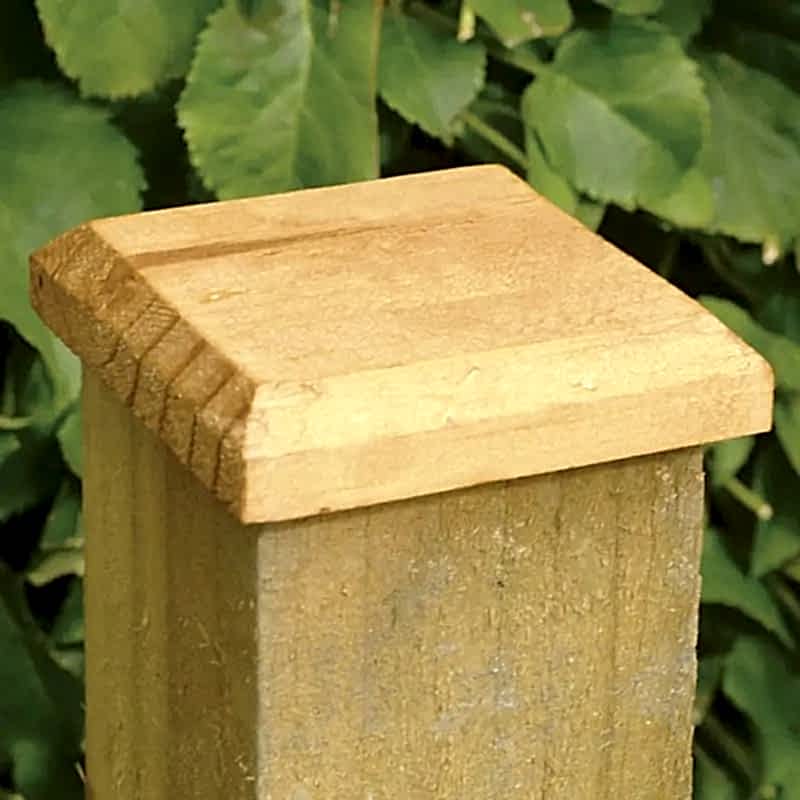

Adding fence post caps and finials
This is an extremely practical idea. Not only do they add enhanced design appeal, but these add-ons are also functional. The decorative elements offered by fence caps and finals protect your fence posts from weather damage, preventing water seepage and wood rot. What is more, decorative caps and ornate fence post finals deter birds keeping your fence line clean. You can easily find suitable add-on options that complement your fence, and your garden gates to enhance your outdoor space.
Step 7: Fence post cost
Fencing costs consist of material costs, installation costs and a few other costs, which are all summarised below.
Fencing material costs
Here is a summary of the fencing material costs you can expect to pay (prices applicable at December 2024):
Fence posts
These are likely to cost:
- Concrete fence posts – from £60 per post
- Timber fence posts – will cost up to £40 per post
Fence panels
Expect to pay:
- Standard fence panels (e.g. overlap) - between £40 and £60
- Closeboard fence panels - between £40 and £70
- Decorative fence panels - these vary quite widely between £65 and £200
Gravel boards
These create a buffer zone between fencing panels and the wet ground below. Costs are:
- Wooden gravel boards - around £10 each
- Concrete gravel boards - around £40 each
- Note: one gravel board is required per fence panel installed
Fencing installation costs
Clearly, fencing posts on their own are of no use to anybody! Below we provide installation costs for complete fencing runs:
- Hourly rate - a UK average is around £25 per hour. This could easily be £40 per hour though in some areas of the UK
- Time per panel - expect a panel to take between 60 to 75 minutes each. This time includes the installation of one concrete or timber fence post
- Cost for a fencing run - let us assume this is for six panels, or 36' in width. We would estimate this would take c400 minutes to install and would cost between £150 and £275. This would be for the installation of six panels and seven posts (there is always one extra post compared to the number of panels)
- Other costs - to keep costs low try completing costs yourself wherever possible. Fencing installation will be achievable for a competent DIYer. Other costs which may arise include equipment hire or purchase, treatment/painting, waste removal and costs will rise if you install an integral garden gate within the fencing run
For detailed information about fence post installation costs and other fencing installations, visit our highly detailed blog post "How to calculate fence installation costs".
Step 8: Fencing accessories
Apart from small fence posts, fence post tops or caps, galvanised fence posts and fence supports, we sell everything you need for fitting fences. Click here for the complete list and here’s a rundown of the accessories you can purchase:
If you need more reasons to buy your fence materials, supplies and fencing supplies from us, here they are:
Our top-quality fencing products are available at great value for money, ensuring competitive pricing. Durability is essential with fencing products, and our full range is built to last and withstand the challenges of the British weather. With our user-friendly website, you can quickly order online with just a few clicks. Our website features built-in search, intuitive navigation and many other customer-friendly features. We provide excellent customer service and are always available to support you by phone, email, or live text chat. Whatever fencing you need, from fence posts to fence panels, you can find it quickly online right here.
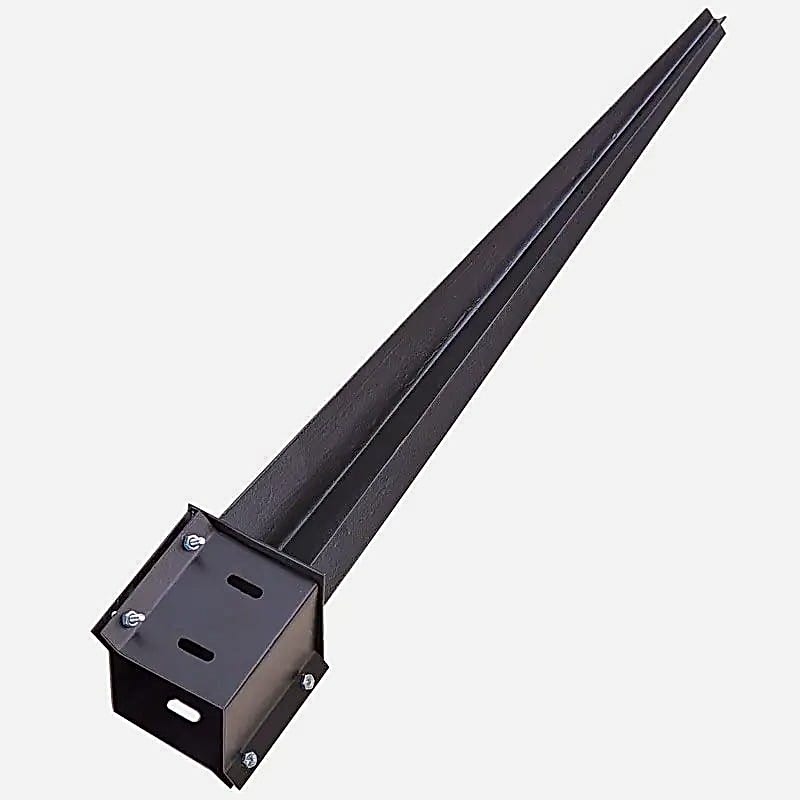

Fence post supports
Fence post supports are designed to brace fence posts and stop them from moving. They may be needed if you have moist or wet soil. Typical fence post supports are coated steel and will not degrade, protecting your wooden fence posts from erosion to extend the life of your fence.
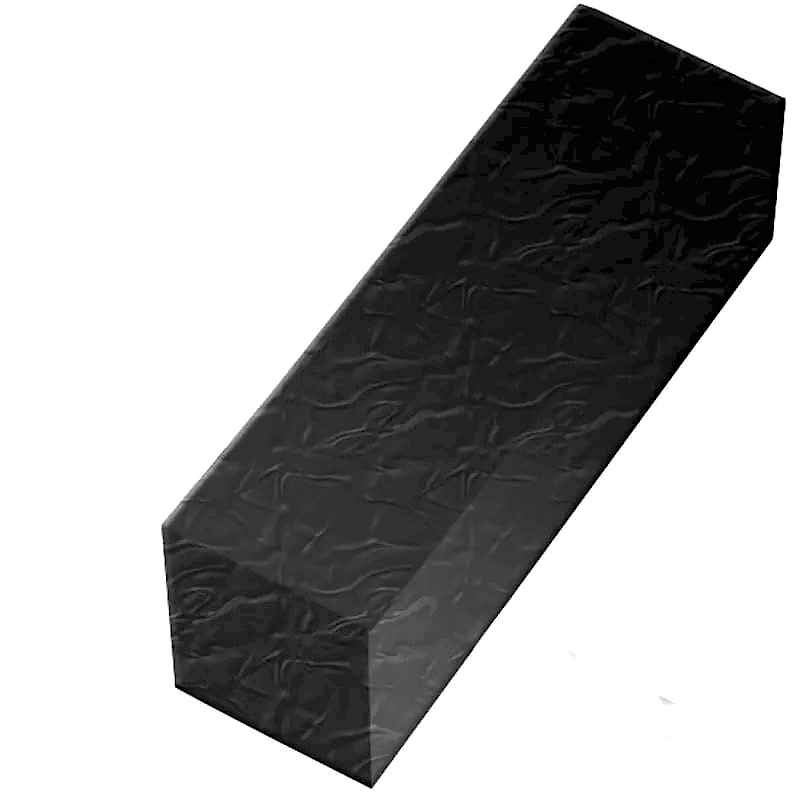

Fence post drivers
You will almost certainly need fence post drivers when you are fitting fence posts and boundary fences. Drivers are used to push the fence post into the ground, making light work for the fence post installation. To buy a fence post driver, click here.
Delivery of fencing posts, panels, and accessories
For all delivery-related questions, please visit our delivery page, below we provide information related to the delivery of fencing posts and associated products.
When will the fencing products be delivered?
If you check our fencing products many are available on pick-a-day delivery. This allows you to select your delivery date at the time of ordering and check individual product details for further information.
Where pick-a-day is unavailable, the lead time for delivery will be provided at an individual product level. When you order the fencing product you will be notified by the manufacturer who will agree on a date for delivery. Once the order is paid for, you are allowed to make changes, but this may impact your agreed delivery date. We therefore advise that you carefully check your order before placing it, to avoid delivery date changes later.


What are the delivery costs?
All orders of decking and fencing products are required to have a minimum £100 or order value to qualify for free delivery. Any orders below £100 will be subject to a delivery charge. Remote postcodes will also incur delivery surcharges for orders that would be free of charge to most UK customers. We recommend using our postcode checker which is on any product page to check that a) We deliver to your area and b) To see if there are any applicable charges.


There is plenty of fencing post information above, but we appreciate that you may still have further questions. We are here to help, so for any outstanding queries why not contact our UK-based customer service team?
They can be contacted by phone, email, or live chat:
- Calls – dial 0333 003 0515
- Emails – these can be sent using our contact page form
- Text chat – messages can be sent in real-time using our live chat feature. This can be accessed by clicking the orange circular icon at the bottom left of any screen




